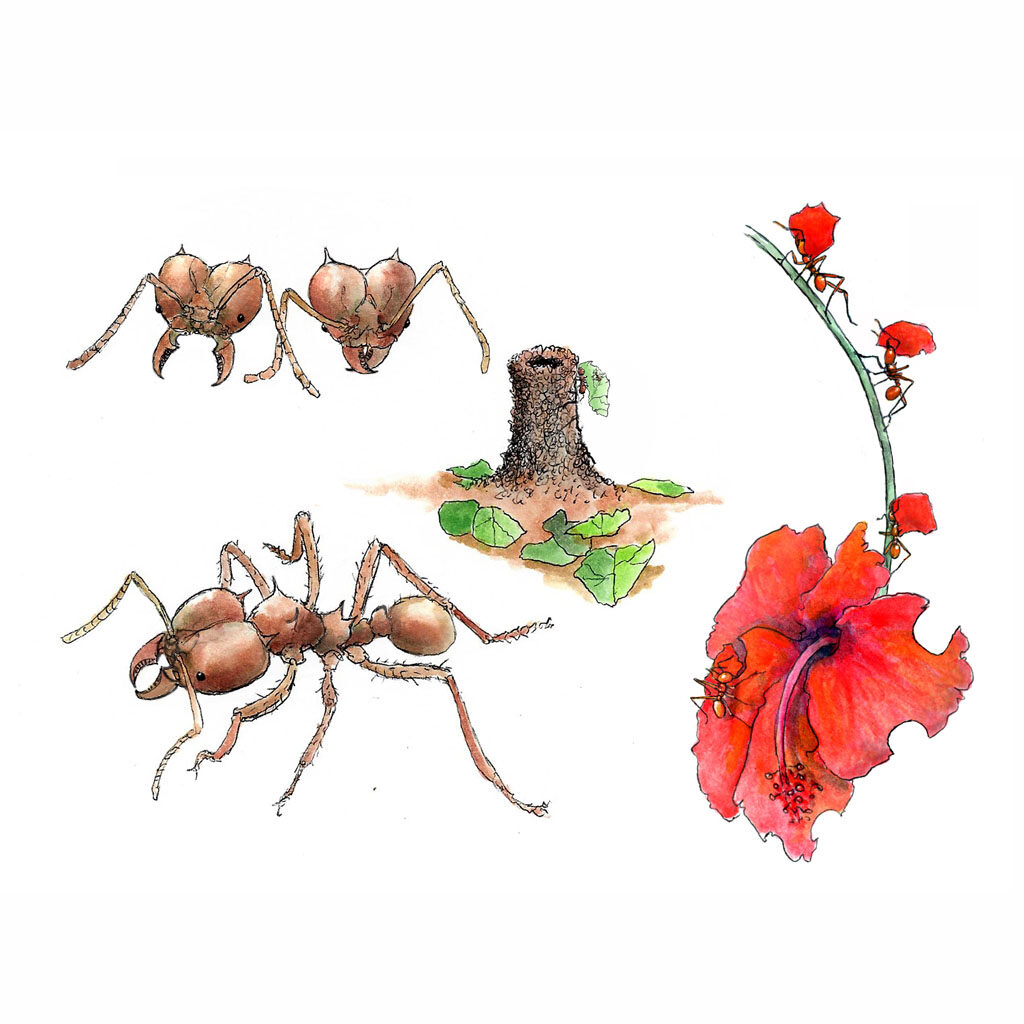Leafcutter Ant

There are many species of leafcutter ants in the tropics, and they are a very important part of the forest ecosystem. They have no sting, but can bite if seriously annoyed. However, they don’t go looking for trouble so you can watch them close up without danger. They’re fascinating!
The ant uses its mandibles, which actually work as shears, vibrating many times per/second, to cut a section of leaf which may be many times the ant’s weight and size. As it cuts, the ant drinks the plant sap for strength. It carries the leaf like a parasol back to the nest, and returns again and again for more, working day and night. Leafcutters regularly change tree species so that they don’t entirely decimate a single type of tree.
So why are they cutting and carrying bits of leaf to their nest? Well, Atta ants are farmers. It’s the job of gardener ants down in the nest to chew up the leaves, reduce them to compost, then seed them with fungus spores so that a nutrient-rich fungus grows on the leaf mulch, making food which they then feed to the pupae in the nest.
If you see a large bare area covered with numerous anthills in the forest, it is a leafcutter complex. The nest cavity and tunnels can extend down several feet, covering an area as much as 20′ across, and the soil there is extremely rich with the fungus and mulch farmed by the ants. This makes the ants a valuable cornerstone in the ecosystem as the surrounding plants and trees tap into the nutrients.The anthills are composed of loose grains, so if there is a torrential rainfall the anthills may wash away until just chimnies of soil are left around the entrances (see the picture above). This also spreads nutrients throughout the forest.
Next time you see leafcutter ants, stop and watch this amazing adaptation of forest and ant, and appreciate the intricate web of life they represent. There’s a good PBS video about them here.